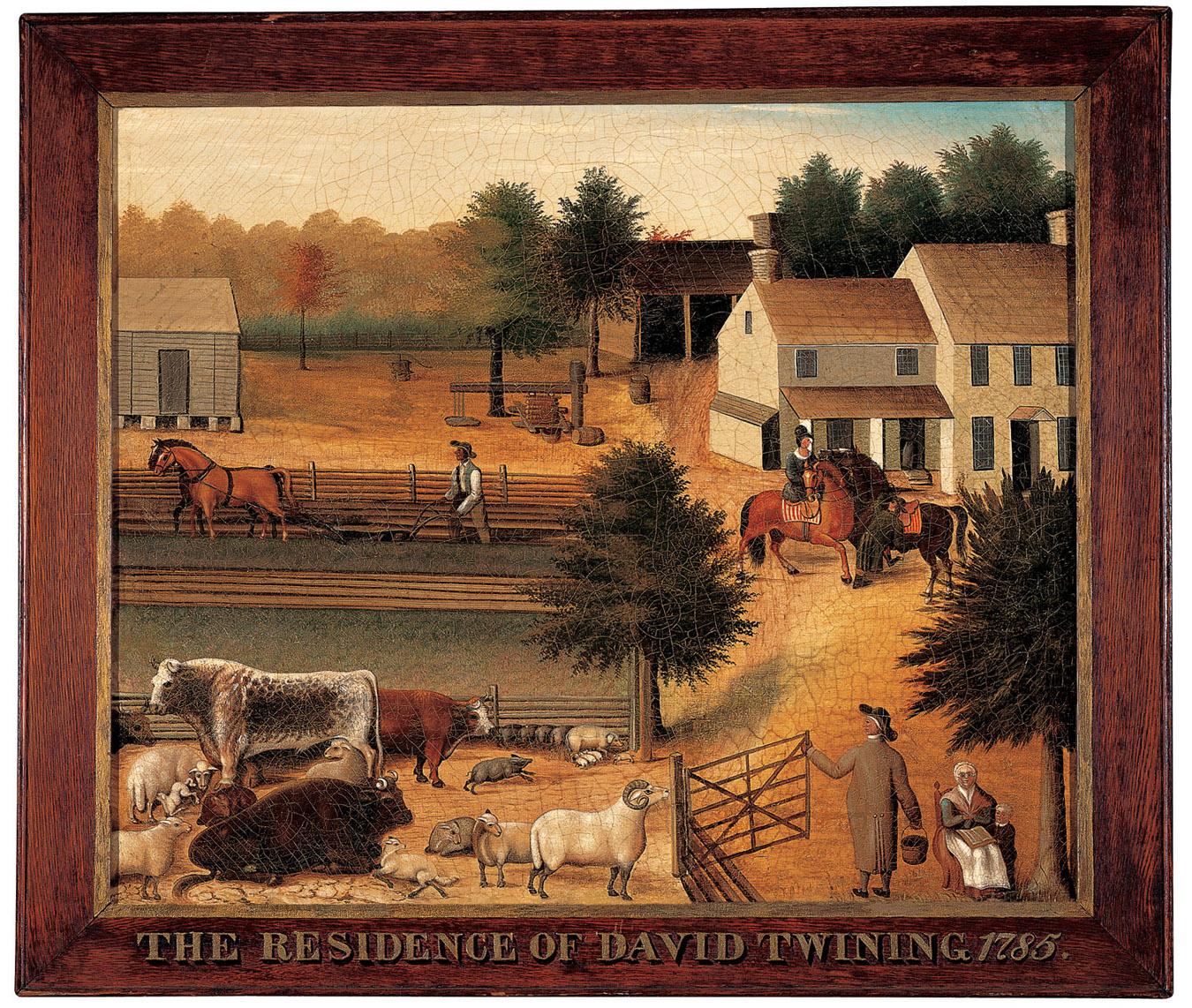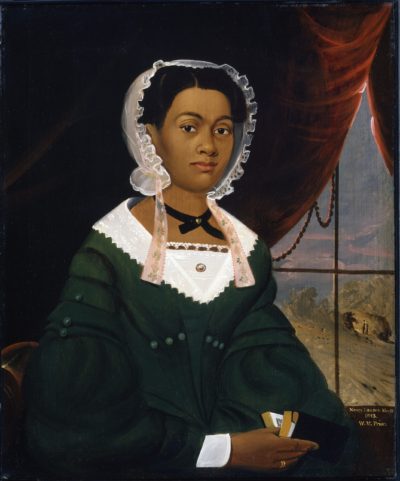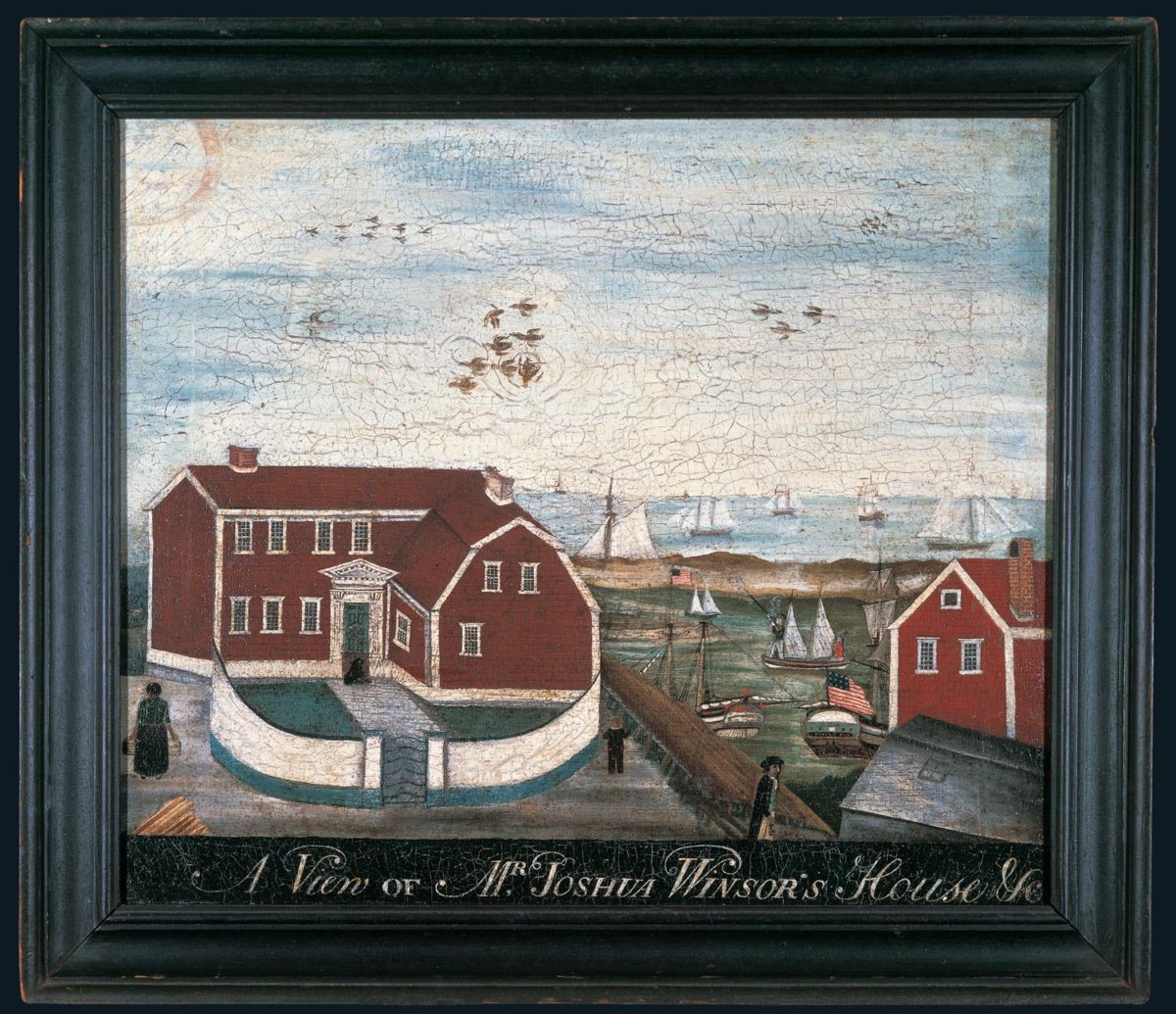The Residence of David Twinning
Edward Hicks




Unnamed Figures: Black Presence and Absence in the Early American North is on view through March 24, 2024. As a corrective to histories that define slavery and anti-Black racism as a largely Southern issue, this exhibition offers a new window onto Black representation in a region that is often overlooked in narratives of early African American history.
Through 125 remarkable works including paintings, needlework, and photographs, this exhibition invites visitors to focus on figures who appear in—or are omitted from—early American images and will challenge conventional narratives that have minimized early Black histories in the North, revealing the complexities and contradictions of the region’s history between the late 1600s and early 1800s.
A 300-page scholarly book with contributions from Gwendolyn DuBois Shaw, Jennifer Van Horn, and several authors, is available for purchase. Please learn more about the book here.
The exhibition is co-curated by Emelie Gevalt, Curatorial Chair for Collections and Curator of Folk Art, AFAM; RL Watson, Assistant Professor of English and African American Studies, Lake Forest College; and Sadé Ayorinde, Terra Foundation Predoctoral Fellow in American Art at the Smithsonian American Art Museum.
To learn more about this exhibition, download our free digital guide on Bloomberg Connects.
Exhibition Related Programs:
December 7, 2023: Virtual Insights: Reasserting Black Presence in the Early American North
January 11, 2024: BlackMass Responds to Unnamed Figures: Tour with Yusuf Hassan and Kwamé Sorrell
February 14, 2024: Notes on Style: A Discussion with BlackMass on Portraiture and Personhood
February 23 and March 28, 2024: “The Picture Is Still Out There”: Reframing Black Presence in the Collections of Early American Art and Material Culture | 2024 Elizabeth and Irwin Warren Folk Art Symposium
March 18, 2024: Autobiographical Landscapes: Gary Tyler in Conversation with Allison Glenn
Access a free exhibition curriculum guide for grades 9-12 by clicking here.
Lead support for this exhibition is provided by the Terra Foundation for American Art, Elizabeth and Irwin Warren, and the National Endowment for the Arts. Major support is provided by David and Dixie De Luca, Citi, the Robert Lehman Foundation, the New York City Department of Cultural Affairs in partnership with the City Council, the New York State Council on the Arts with the support of the Office of the Governor and the New York State Legislature. Additional support is provided by Julia F. Alexander, Monty Blanchard and Leslie Tcheyan, Laurent Delly and Lybra Clemons, Susan and James Hunnewell, Gail Wright Sirmans, Donna L. Skerrett, Ramondy Thermidor, the American Folk Art Society, Furthermore: a program of the J. M. Kaplan Fund, the Dorothea & Leo Rabkin Foundation, and the David Davies and Jack Weeden Fund for Exhibitions.
- The New York Times

Edward Hicks (1780–1849)
The Residence of David Twining, 1785.
Newtown, Pennsylvania
1846.
Oil on canvas,
In original wood frame with paint and gold leaf, 30 1/2 x 35 7/8 in.
American Folk Art Museum, Gift of Ralph Esmerian, 2005.8.13

William Matthew Prior (1806-1873)
Nancy Lawson
Boston, Massachusetts
1843
Oil on canvas
30 1/8 x 25 in.
Shelburne Museum, Vermont, USA©
Shelburne Museum/Museum purchase, acquired from Maxim Karolik/Bridgeman Images

William Matthew Prior (1806-1873)
William Lawson
Boston, Massachusetts
1843
Oil on canvas
30 1⁄4 x 25 1⁄4 in.
Shelburne Museum, Vermont, USA©
Shelburne Museum/Museum purchase, acquired from Maxim Karolik/Bridgeman Images

Rufus Hathaway (1770-1822)
A View of Mr. Joshua Winsor’s House
Duxbury, Massachusetts.
c. 1793-1795.
Oil oncanvas, 28 x 32 3/16 x 2 in.
American Folk Art Museum, gift of Ralph Esmerian, 2013.1.19
Lead support for this exhibition is provided by the Terra Foundation for American Art, Elizabeth and Irwin Warren, and the National Endowment for the Arts. Major support is provided by David and Dixie De Luca, Citi, the Robert Lehman Foundation, the New York City Department of Cultural Affairs in partnership with the City Council, the New York State Council on the Arts with the support of the Office of the Governor and the New York State Legislature. Additional support is provided by Julia F. Alexander, Monty Blanchard and Leslie Tcheyan, Laurent Delly and Lybra Clemons, Susan and James Hunnewell, Gail Wright Sirmans, Donna L. Skerrett, Ramondy Thermidor, the American Folk Art Society, Furthermore: a program of the J. M. Kaplan Fund, the Dorothea & Leo Rabkin Foundation, and the David Davies and Jack Weeden Fund for Exhibitions.